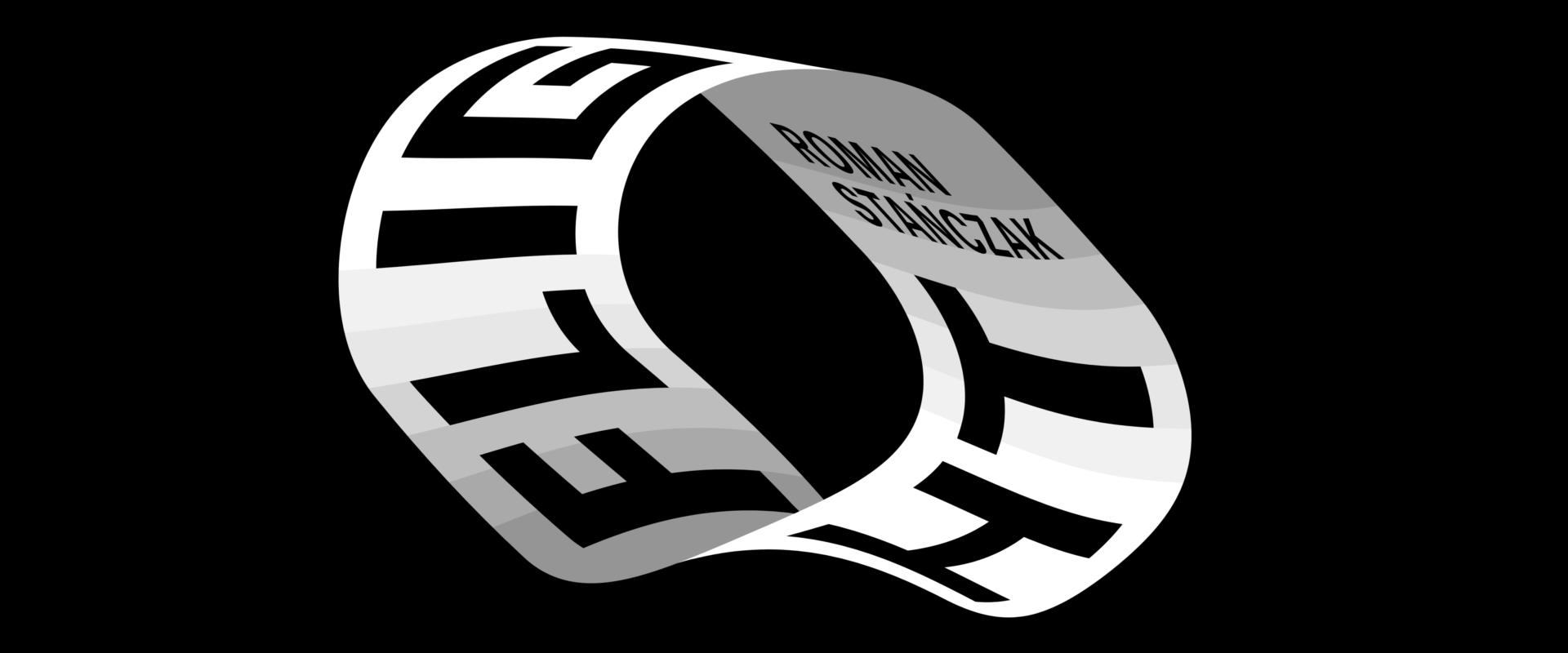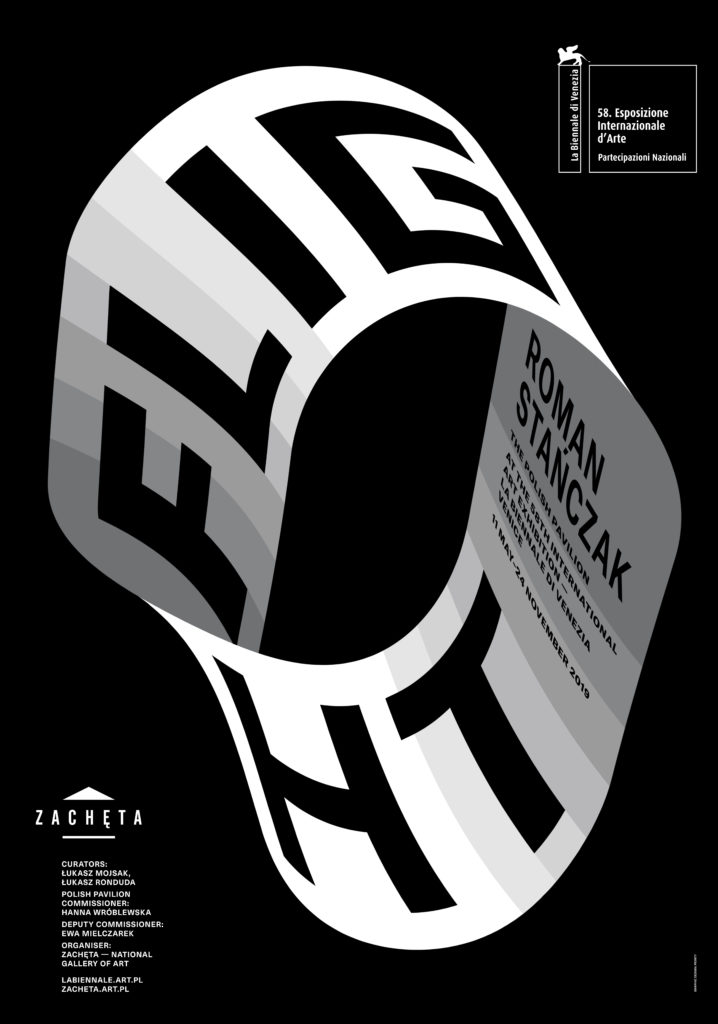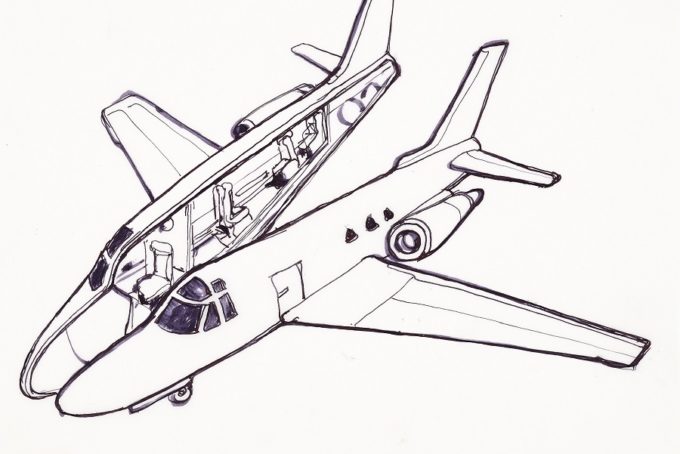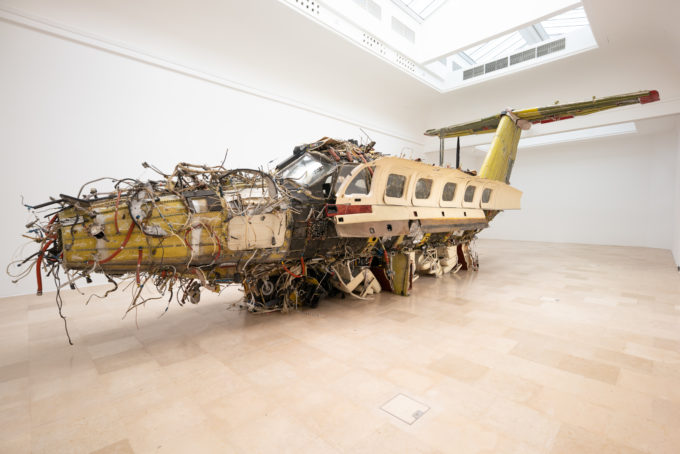
Flight
Roman Stańczak
Flight, a sculpture by Roman Stańczak, will be presented at the Polish Pavilion during the 58th International Art Exhibition — La Biennale di Venezia. Visitors will experience the unique form and scale of the sculpture — an inside-out aircraft — but also the effect of an unexpected “reversal of the world”. The project delivers a commentary on the situation of political and economic transformations. The exhibition, curated by Łukasz Mojsak and Łukasz Ronduda, organised by the Zachęta — National Gallery of Art, opens on 11 May 2019.
“Turning things inside out speaks about hope”, Roman Stańczak stated in an interview devoted to the Flight project. The procedure of turning an object inside out has a spiritual dimension as “preparation for death”, passage to the other side, creation through destruction and at the same time, the act of reaching the essence of things. It is also a commentary on the effects of political and economic transformations that make themselves manifest both in material culture and in the society. The Polish Pavilion will feature an aircraft processed according to Stańczak’s artistic strategy of deconstructing the material order of things – depriving them of their usual function and aesthetic value, while offering them a new form and meaning. The aircraft will be cut in half and turned inside out so that its interior with cockpit and on-board equipment, as well as passenger seats, will emerge on the outside, while the wings and the hull will be wound inside, to the interior of the sculpture.
The idea of an inside-out aircraft — which came to the artist’s mind 30 years ago but never materialised — marks yet another stage of Roman Stańczak’s creative practice. Throughout the years, it has grown in new contexts that lend Flight a multi-dimensional and universal character. Nowadays, the aircraft stands as a symbol of the rift that troubles the Polish society. On a more universal level, it is also a major technological achievement and a machine that we entrust our lives to. It marks the starting point for interpreting and enquiring about the condition of the Polish society after a breakthrough event. A private aircraft is also a status symbol and a means of transport used by the so-called “1%” — the über-wealthy social class. To deconstruct this embodiment of accumulation of capital is to deliver a critical commentary on reality marked by economic and social inequalities. Stańczak’s project also articulates the conflict between modernity and spirituality — when annihilation of one of these spheres contributes to the expansion of the other. Akin to his previous works, Stańczak seeks to prove that people are in need of a spiritual change, which they may experience in a situation that negates a familiar order of things and disturbs their safe existence in the world.
Stańczak graduated from the famous “Kowalnia” studio of Professor Grzegorz Kowalski at the Faculty of Sculpture of the Academy of Fine Arts in Warsaw. Around the same time, the studio of Professor Kowalski — a disciple of Oskar Hansen, visionary architect and author of the Open Form Theory — was attended by such artists as Katarzyna Kozyra, Paweł Althamer, Artur Żmijewski and Jacek Adamas. Stańczak debuted in the 1990s, when his pieces emerged from the margins of the then-nascent Polish critical art. The artist declares: “My sculptures speak of living not among objects but among ghosts”.
- YEAR2019
- CATEGORY Biennale Arte
- EDITION58
- DATES11.05 – 24.11
- COMMISSIONERHanna Wróblewska
- CURATORŁukasz Mojsak, Łukasz Ronduda
Authors
Roman Stańczak — b. 1969 in Szczecin. Graduate of ‘Kowalnia’ — studio of Professor Grzegorz Kowalski at the Faculty of Sculpture of the Academy of Fine Arts in Warsaw. After the studies, between 1994 and 1997, Stańczak presented his works at individual exhibitions at the Ujazdowski Castle Centre for Contemporary Art in Warsaw and the State Art Gallery in Sopot, after which he vanished from the art scene. The artist returned in 2013, when the Museum of Modern Art in Warsaw showed his early pieces in a collection exhibition, and he created the sculpture Guardian Angel at the Sculpture Park in the Bródno housing estate in Warsaw.
Stańczak’s individual exhibitions have been organised at the Ujazdowski Castle CCA in Warsaw, State Art Gallery in Sopot, Stereo Gallery in Warsaw, and the Frieze Art Fair in London, among other venues. The artist has participated in group shows at the Saatchi Gallery and The Sunday Painter in London, Bureau Gallery in New York and Künstlerhaus Bethanien in Berlin, as well as leading art institutions in Poland, such as the Zachęta — National Gallery of Art and the Museum of Modern Art in Warsaw, Wrocław Contemporary Museum, Labirynt Gallery in Lublin. His works belong to collections of the Museum of Modern Art and the Ujazdowski Castle CCA in Warsaw, Muzeum Sztuki in Łódź, Saatchi Collection in London. Stańczak is represented by the Stereo Gallery in Warsaw. Lives and works in Warsaw.
Łukasz Mojsak – graduate of art history at the University of Warsaw and contemporary art theory at Goldsmiths, University of London. Between 2011 and 2016, affiliated with the Museum of Modern Art in Warsaw, where he co-created the artists’ moving image archive Filmoteka Muzeum and the Performance Archive. Collaborates with the Arton Foundation in Warsaw. Curator of exhibitions at the Labirynt Gallery in Lublin (Communis – Renegotiating Community, with Szymon Maliborski, 2016) and the Arton Foundation (Across Realities. Wojciech Bruszewski/Mateusz Sadowski, with Marika Kuźmicz, 2014; Ludmiła Popiel, 2016; Faint Forms. Ludmiła Popiel/Jerzy Fedorowicz, with Marika Kuźmicz, 2018), among other shows. Curator of film screenings at Tate Modern (2013, 2014) and Whitechapel Gallery (2017) in London and at the International Short Film Festival in Oberhausen (2014). Co-editor (with Marika Kuźmicz) of the books Wojciech Bruszewski. Across Realities (2015) and Ludmiła Popiel/Jerzy Fedorowicz (due in 2019). Author of numerous translations of books and texts on art. Lives and works in London and Warsaw.
Łukasz Ronduda — art historian, curator, film director. Curator at the Museum of Modern Art in Warsaw. Associate Professor at the Faculty of Management of Visual Culture, Academy of Fine Arts in Warsaw. Author of books: Polish Art of the 70s. Avant-garde (2009), Subversive Strategies in the Media Arts (2006), Warpechowski, Konieczny, Bodzianowski, Uklański. Warpechowski, Dawicki (2011). Editor of publications: Workshop of the Film Form (with Marika Kuźmicz, 2017), Polish Cine Art, or the Cinematographic Turn in Polish Contemporary Art (with Jakub Majmurek, 2016), Oskar Hansen: Opening Modernism (with Aleksandra Kędziorek, 2014), KwieKulik (with Georg Schöllhammer, 2013). In 2011, Ronduda published the novel W połowie puste [Half-Empty], written alongside Łukasz Gorczyca.
Curator of exhibitions: Down with the Pimps of Art! Relationships between Art and Punk (with M. Woliński, Warsaw Stock Exchange, 2006); New National Art (with Sebastian Cichocki, Museum of Modern Art in Warsaw, 2012), As You Can See: Polish Art Today (with Sebastian Cichocki, Museum of Modern Art, 2014), Bread and Roses (with Natalia Sielewicz, Museum of Modern Art, 2016). What Is Enlightenment? (with Goshka Macuga and Tomasz Szerszeń, Museum of Modern Art, 2018), among other shows.
Director of feature films: The Performer (2015) and A Heart of Love (2017).






